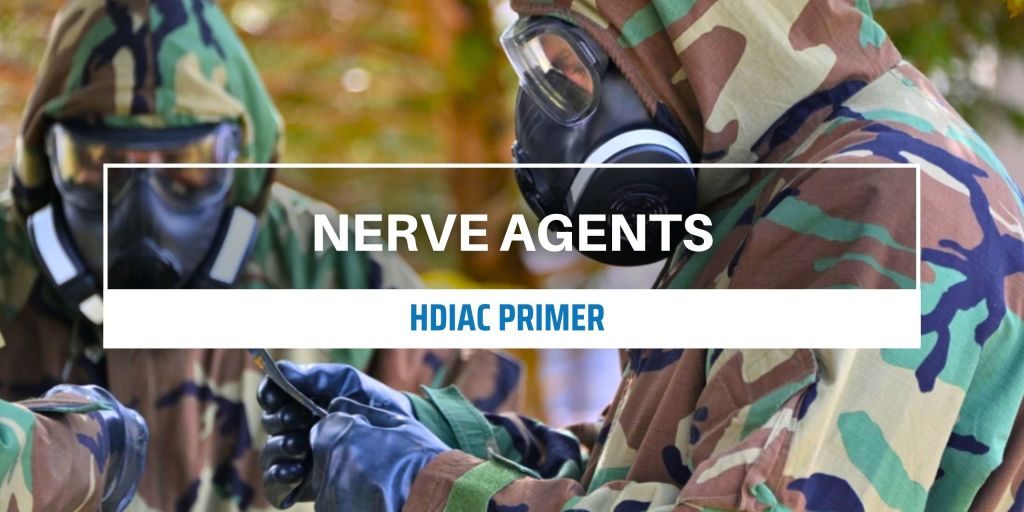Nerve agents listed as Schedule 1 agents by the Chemical Weapons Convention include (1) tabun (GA), (2) sarin (GB), (3) soman (GD), (4) VX, and (5) cyclosarin [2]. Each has its own distinct physical properties but produces similar symptoms. Constriction of pupils (miosis), clouded vision, runny nose, tight chest, shortness of breath, headache, salivation, muscle spasms, sweating, vomiting, heavy fatigue, interim lack of breathing (apnea), paralysis from reduced muscle tone (flaccid paralysis), profuse nasal discharge, intensified miosis (pinpoint pupils), diarrhea, hardness of breath, or a complete loss in breathing, paralysis, muscular twitching, defecation, urination, coma, and death are common. It is important to note that the severity of symptoms depends largely on dosage and exposure route (inhalation, ingestion, skin, and eyes) [3].

POSTED: October 4, 2025
What are nerve agents?
Relevant Applications to the U.S. Department of Defense (DoD)
Novichok Poisonings
Novichoks, sometimes referred to as fourth-generation agents, are a family of nerve agents developed in Russia. Two attacks involving Novivhoks have taken place—one in 2018 and one in 2020 [4].
The Civil War in Syria
There have been relatively recent use cases of the nerve agent sarin in Syria. It was released in Ghouta, Syria, in 2013 and again in northern Syria in 2017. There were 1,400 casualties in the attack in 2013 and more than 80 civilian casualties in 2017 [5].
The Iran-Iraq War
The nerve agents tabun and sarin were commonly used in combination with mustard gas by Iraq in the Iran-Iraq War and resulted in around 45,000 Iranian casualties [6].
Additional Resources
-
Reaction of Reactive Skin Decontamination Lotion (RSDL) With Nerve Agents Sarin (GB) and Soman (GD) and Forming Degradation Products (Homeland Defense & Security Information Analysis Center)
-
Next-Generation Nerve Agent Antidotes (Homeland Defense & Security Information Analysis Center)
-
What References or Fact Sheets Describe the Newest Technologies in the Detection of CBRN Agents and/or Material? (Homeland Defense & Security Information Analysis Center)
Latest Related News/Articles
-
Enhancing Oxime Efficacy Into Brain Using Ultrasound to Counteract Nerve Agent Exposure (05/09/2025)
-
Recent Development of Nanoparticle Platforms for Organophosphate Nerve Agent Detoxification (01/25/2025)
-
Advances in Polyoxometalate-Based Catalysts for Catalytic Decontamination of Nerve Agents (12/16/2024)
References
[1] Facts: Characteristics of Nerve Agents (Program Executive Office Assembled Chemical Weapons Alternatives)
[2] Chemical Weapons Convention (Organization for the Prohibition of Chemical Weapons)
[3] Chemical Quick Reference Guides (The U.S. National Response Team)
[4] Putin’s poisons: 2020 attack on Aleksey Navalny (U.S. Embassy in Georgia)
[5] Chemical Warfare Agents – Old Problems and New Challenges (Bundeswehr Institute of Pharmacology and Toxicology)
[6] Medical Aspects of Chemical and Biological Warfare: Chapter 5 – Nerve Agents (Office of the Surgeon General, U.S. Department of the Army)

